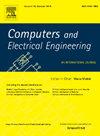An efficient consortium blockchain privacy protection scheme based on group signatures and bulletproofs
IF 4
3区 计算机科学
Q1 COMPUTER SCIENCE, HARDWARE & ARCHITECTURE
引用次数: 0
Abstract
Compared to the public blockchain, the consortium blockchain restricts nodes’ read and write permissions; however, in the transaction transfer process, the ledger is transparent to all parties involved, and research continues to focus on the security of private data during the transaction. Most current blockchain privacy protection schemes concentrate on protecting the transaction amount’s privacy, but the issue of identify exposure of both parties during the transaction process has not received enough attention, and the transaction legitimacy verification strategy may lead to inadequate security due to the use of ineffective cryptographic algorithms. This paper proposes a scheme for blockchain privacy protection based on group signatures and bulletproofs (BPPGSB). To guarantee that the identities of both parties are hidden from the common nodes, verifiable to the verification nodes, and traceable to the group administrator nodes, the ElGamal algorithm on elliptic curves (EC-ElGmal) is employed to process and improve interaction processes that may reveal identity information in the original group signature scheme. Meanwhile, the bulletproofs, a zero-knowledge proof algorithm based on Pedersen commitment, is developed to validate the transaction legitimacy process both comprehensively and effectively. Together with the whole validation strategy for the transaction with a transaction amount greater than zero and transaction balance greater than or equal to zero, the verification process ensures no exposure of the actual transaction data involved in the transaction. The experimental results indicate that, compared to the current scheme, the entire transaction process can hide the identities and transaction details of the two parties involved in the transaction, the transaction validation algorithm is more effective, and the validation strategy is more comprehensive. Also, the running time of our approach is less than existing privacy protection schemes.
基于群签名和防弹的高效财团b区块链隐私保护方案
与公共区块链相比,财团区块链限制节点的读写权限;然而,在交易转移过程中,账本对所有相关方都是透明的,交易过程中私人数据的安全性问题仍是研究的焦点。目前大多数区块链隐私保护方案都集中在保护交易金额的隐私上,但交易过程中双方身份暴露的问题并没有得到足够的重视,交易合法性验证策略也可能由于使用无效的加密算法而导致安全性不足。提出了一种基于群签名和防弹(BPPGSB)的区块链隐私保护方案。为了保证双方的身份对普通节点不可见、对验证节点可验证、对组管理员节点可追溯,采用椭圆曲线上的ElGamal算法(EC-ElGmal)对原组签名方案中可能泄露身份信息的交互过程进行处理和改进。同时,开发了基于Pedersen承诺的零知识证明算法bulletproofs,对交易合法性过程进行全面有效的验证。与交易金额大于零且交易余额大于等于零的交易的整个验证策略一起,验证过程确保不暴露交易中涉及的实际交易数据。实验结果表明,与现有方案相比,整个交易过程可以隐藏交易双方的身份和交易细节,交易验证算法更有效,验证策略更全面。此外,该方法的运行时间比现有的隐私保护方案短。
本文章由计算机程序翻译,如有差异,请以英文原文为准。
求助全文
约1分钟内获得全文
求助全文
来源期刊

Computers & Electrical Engineering
工程技术-工程:电子与电气
CiteScore
9.20
自引率
7.00%
发文量
661
审稿时长
47 days
期刊介绍:
The impact of computers has nowhere been more revolutionary than in electrical engineering. The design, analysis, and operation of electrical and electronic systems are now dominated by computers, a transformation that has been motivated by the natural ease of interface between computers and electrical systems, and the promise of spectacular improvements in speed and efficiency.
Published since 1973, Computers & Electrical Engineering provides rapid publication of topical research into the integration of computer technology and computational techniques with electrical and electronic systems. The journal publishes papers featuring novel implementations of computers and computational techniques in areas like signal and image processing, high-performance computing, parallel processing, and communications. Special attention will be paid to papers describing innovative architectures, algorithms, and software tools.
 求助内容:
求助内容: 应助结果提醒方式:
应助结果提醒方式:


